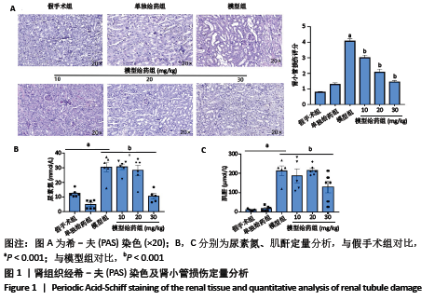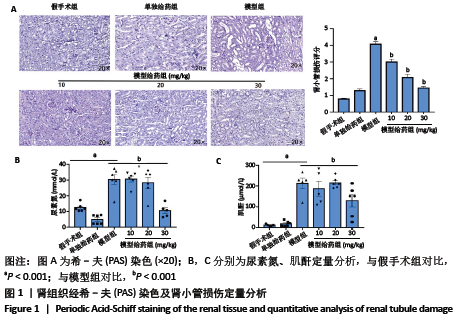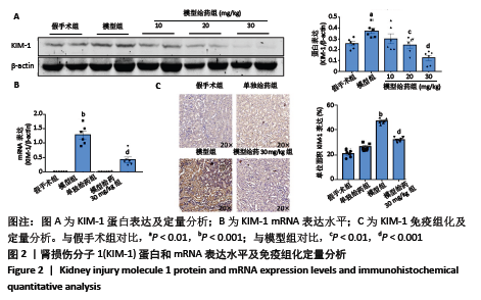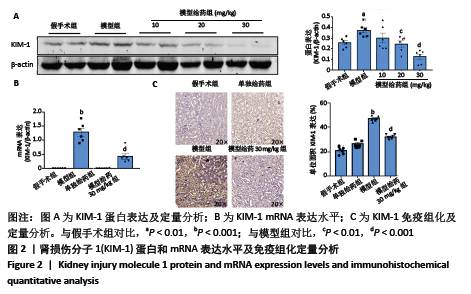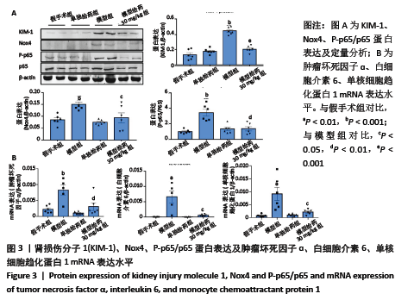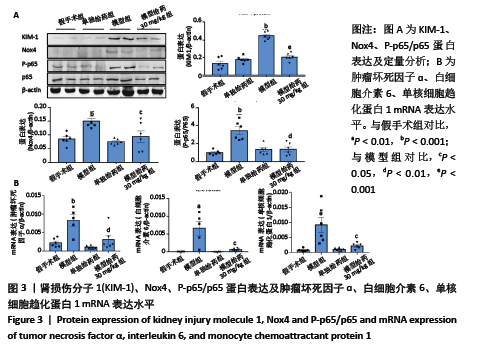[1] YUAN SM. Acute Kidney Injury after Cardiac Surgery: Risk Factors and Novel Biomarkers. Braz J Cardiovasc Surg. 2019;34(3):352-360.
[2] ROSNER MH, OKUSA MD. Acute kidney injury associated with cardiac surgery. Clin J Am Soc Nephrol. 2006;1(1):19-32.
[3] NADIM MK, FORNI LG, BIHORAC A, et al. Cardiac and Vascular Surgery-Associated Acute Kidney Injury: The 20th International Consensus Conference of the ADQI (Acute Disease Quality Initiative) Group. J Am Heart Assoc. 2018;7(11):e008834.
[4] ORTEGA-LOUBON C, FERNÁNDEZ-MOLINA M, CARRASCAL-HINOJAL Y, et al. Cardiac surgery-associated acute kidney injury. Ann Card Anaesth. 2016;19(4):687-698.
[5] KO T, HIGASHITANI M, SATO A, et al. Impact of Acute Kidney Injury on Early to Long-Term Outcomes in Patients Who Underwent Surgery for Type A Acute Aortic Dissection. Am J Cardiol. 2015;116(3):463-468.
[6] RAUP-KONSAVAGE WM, WANG Y, WANG WW, et al. Neutrophil peptidyl arginine deiminase-4 has a pivotal role in ischemia/reperfusion-induced acute kidney injury. Kidney Int. 2018;93(2):365-374.
[7] ELTZSCHIG HK, ECKLE T. Ischemia and reperfusion--from mechanism to translation. Nat Med. 2011;17(11):1391-1401.
[8] KORKMAZ A, KOLANKAYA D. Inhibiting inducible nitric oxide synthase with rutin reduces renal ischemia/reperfusion injury. Can J Surg. 2013; 56(1):6-14.
[9] LEVEY AS, JAMES MT. Acute Kidney Injury. Ann Intern Med. 2017;167(9): ITC66-ITC80.
[10] PATSCHAN D, MÜLLER GA. Acute kidney injury. J Inj Violence Res. 2015; 7(1):19-26.
[11] 沈龙海,安泳潼,杨庆尧,等.中国被毛孢菌丝体提取物抗肾损伤作用体内外实验研究[J].中国药理学通报,2011,27(11):1537-1540.
[12] 呼敏凤,尚立芝,韦大文.川芎嗪预处理对心肌缺血再灌注损伤大鼠保护作用的实验研究[J].上海中医药杂志,2008,42(4):66-68.
[13] 杨家荣,张密霞,常亮堂,等.川芎嗪、阿魏酸及其配伍对心肌缺血再灌注模型大鼠的保护作用及对黏附分子的影响[J].中草药, 2008,39(7):1054-1056.
[14] 王娜,许海江,赵春玲.川芎嗪对大鼠肾缺血再灌注损伤的保护作用及其机制[J].山西中医学院学报,2016,17(4):19-21.
[15] 霍展样,牛桂萍,刘晓丽.川芎嗪对小鼠急性肾缺血再灌注损伤的保护作用研究[J].中国临床药理学与治疗学,2004,9(2):230-233.
[16] GABBAI FB, HAMMOND TC, THOMSON SC, et al. Effect of acute iNOS inhibition on glomerular function in tubulointerstitial nephritis. Kidney Int. 2002 ;61(3):851-814.
[17] UM SC, SUZUKI S, TOYOKUNI S, et al.Formation of 4-hydroxy-2-nonenal-modified proteins and 3-nitro-L-tyrosine in rat island skin flaps during and after ischemia. Ann Plast Surg. 1999;42(3):293-298.
[18] WANG WZ, FANG XH, STEPHESON LL, et al. Acute microvascular action of vascular endothelial growth factor in skeletal muscle ischemia/reperfusion injury. Plast Reconstr Surg. 2005;115(5):1355-1365.
[19] CARROLL CM, CARROLL SM, OVERGOOR ML, et al. Acute ischemic preconditioning of skeletal muscle prior to flap elevation augments muscle-flap survival. Plast Reconstr Surg. 1997;100(1):58-65.
[20] LEI C, BERRA L, REZOAGLI E, et al. Nitric Oxide Decreases Acute Kidney Injury and Stage 3 Chronic Kidney Disease after Cardiac Surgery. Am J Respir Crit Care Med. 2018;198(10):1279-1287.
[21] ORTEGA-LOUBON C, FERNÁNDEZ-MOLINA M, CARRASCAL-HINOJAL Y, et al. Cardiac surgery-associated acute kidney injury. Ann Card Anaesth. 2016 ;19(4):687-698.
[22] LEWINGTON AJ, CERDÁ J, MEHTA RL. Raising awareness of acute kidney injury: a global perspective of a silent killer. Kidney Int. 2013;84(3):457-467.
[23] GOLIGORSKY MS, NOIRI E, TSUKAHARA H,et al. A pivotal role of nitric oxide in endothelial cell dysfunction. Acta Physiol Scand. 2000;168(1): 33-40.
[24] ROSNER MH, PORTILLA D, OKUSA MD. Cardiac surgery as a cause of acute kidney injury: pathogenesis and potential therapies. J Intensive Care Med. 2008;23(1):3-18.
[25] 梅长林,刘森炎.急性肾损伤诊治进展[J].解放军医学杂志,2013, 38(5):342-346.
[26] 尹连红,齐蒙,彭金咏.急性肾损伤的分子机制及中药干预研究进展[J].中国药理学通报,2016,32(11):1494-1500.
[27] 王汉民,谭华,赵洪雯,等.川芎嗪对大鼠肾脏缺血/再灌注损伤保护作用及抗细胞凋亡作用[J].第四军医大学学报,2008,29(9):833-836.
[28] 汪燕,马传荣,贺国芳,等.川芎嗪对大鼠肾缺血-再灌注后核因子-κB表达与一氧化氮合酶活性的影响[J].医药导报,2008,27(2): 128-131.
[29] 孙万森,吴喜利,乔成林.川芎嗪对慢性肾功能衰竭大鼠血浆内皮素和肿瘤坏死因子的影响[J].中国中医急症,2004,13(2):109-110+64.
[30] LI VOLTI G, SORRENTI V, MURABITO P, et al. Pharmacological induction of heme oxygenase-1 inhibits iNOS and oxidative stress in renal ischemia-reperfusion injury. Transplant Proc. 2007;39(10):2986-2991.
[31] 叶青,徐达.丹参和川芎嗪对肾脏缺血-再灌注损伤的防治作用[J].上海交通大学学报(医学版),2008,28(3):342-344.
[32] OZTURK H, TUNCER MC, OZTURK H, et al. Nitric oxide regulates expression of sonic hedgehog and hypoxia-inducible factor-1alpha in an experimental model of kidney ischemia-reperfusion. Ren Fail. 2007;29(3):249-256.
[33] XU T, CHEN X, WANG XF, et al. Electron paramagnetic resonance in monitoring of nitric oxide production after kidney transplantation in rats. Chin Med J (Engl). 2004 ;117(10):1552-1557.
[34] 许益笑,张睿喆,王德选,等.左卡尼汀对肾缺血再灌注损伤大鼠肾组织MPO和NO含量的影响[J].郑州大学学报(医学版),2012, 47(6):810-813.
[35] KUNTSCHER V, TRESKA V, RACEK J, et al. Does the administration of antioxidants as scavengers of reactive oxygen species in kidney transplantation really have sense.Bratisl Lek Listy. 2007;108(9):385-387.
[36] 邱涛,周江桥,陈晖,等.臭氧氧化预处理在肾缺血再灌注损伤中对内皮型一氧化氮合酶表达的影响[J].中华移植杂志(电子版), 2013,7(2):83-88.
[37] 陈辉乐,毛朝鸣,金可可,等.川芎嗪干预肾缺血再灌注损伤时内皮素-1、一氧化氮和超微结构变化[J].中华中医药学刊,2013,31(2): 318-320+461.
[38] SPINA S, LEI C, PINCIROLI R, et al. Hemolysis and Kidney Injury in Cardiac Surgery: The Protective Role of Nitric Oxide Therapy. Semin Nephrol. 2019;39(5):484-495.
[39] PARK KM, BYUN JY, KRAMERS C, et al. Inducible nitric-oxide synthase is an important contributor to prolonged protective effects of ischemic preconditioning in the mouse kidney. J Biol Chem. 2003;278(29): 27256-27266.
[40] HOLTERMAN CE, READ NC, KENNEDY CR. Nox and renal disease. Clin Sci (Lond). 2015;128(8):465-481.
[41] GORIN Y, BLOCK K. Nox4 and diabetic nephropathy: with a friend like this, who needs enemies? Free Radic Biol Med. 2013;61:130-142.
[42] MENG XM, REN GL, GAO L, et al. NADPH oxidase 4 promotes cisplatin-induced acute kidney injury via ROS-mediated programmed cell death and inflammation. Lab Invest. 2018;98(1):63-78. |
